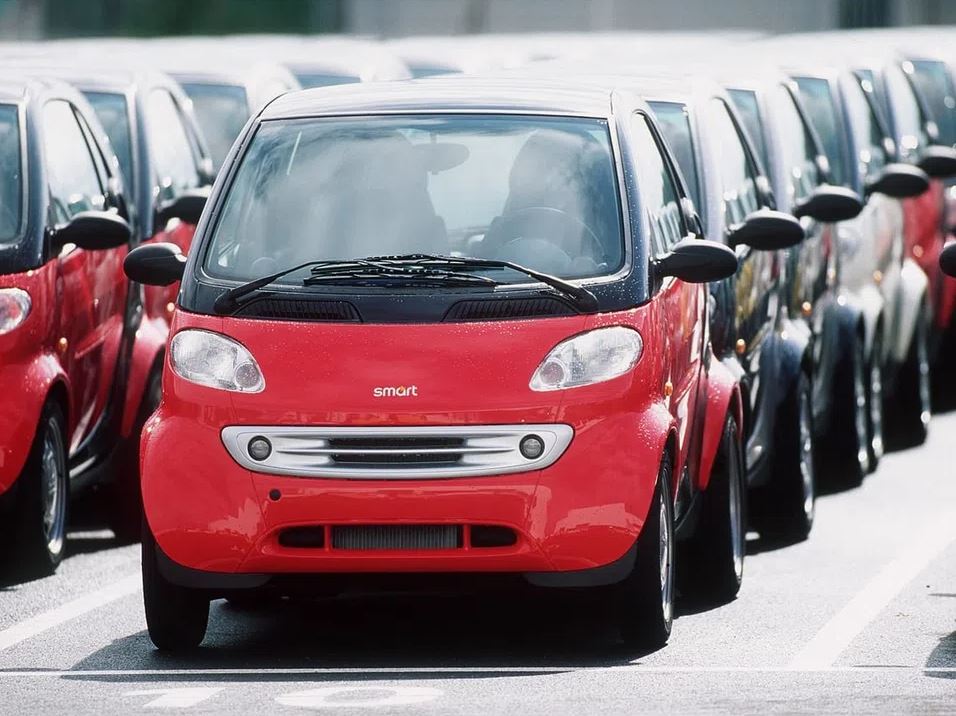
25 years of Smart: a small car with a big vision

The first Smart car was launched 25 years ago through a joint venture established by Mercedes-Benz AG and Zhejiang Geely Holding Group in 2019. But after the attempted revolution came disillusionment. A look back at the origins of a small car with a big vision to revolutionize the car industry.
A quarter of a century has passed since the two-and-a-half-metre short Smart car celebrated its world debut at the international motor show in Frankfurt, Germany. The idea for the pint-sized car came from Swatch inventor Nicolas Hayek and the car was originally called the “Swatch Car”.
A vision of mobility revolution
Hayek’s vision was that of a high-quality, low-cost and environmentally friendly electric car. After a first failed attempt with German automobile manufacturer, Volkswagen, Hayek brought the idea of the ecological small car to life in cooperation with Mercedes-Benz. Hence the name “Smart”: S stands for Swatch, M for Mercedes and Art for the art of building this car.
Hayek was inspired by the environmental concerns and was bothered by the fact that most cars were being driven around with less passengers than the car could hold. He questioned the need to build bigger cars, wasting space and material unnecessarily which would ultimatly pollute the environment. His solution? As the “car of the future”, the Smart car was supposed be a way to find solutions to these problems. The target audience for the light, manoeuvrable city car was young, urban singles and childless couples.
But the collaboration with Mercedes-Benz did not go as hoped either. The car did not meet Hayek’s expectations. Among other things, it ran on an internal combustion engine instead of a more ecological electric motor as originally planned. As a result, he sold all his shares shortly after the start of sales.
Bigger is better?
The early sale of shares proved to be the right decision. According to mobility expert Thomas Sauter-Servaes, the trend towards more ecologically friendly small cars was not widely accepted. The project with the aim of revolutionising urban traffic had failed.
Drivers wanted to be able to do everything with their car: from going on holiday, transporting shopping or picking up the children. Today, the trend is still being driven by large cars such as sport utility vehicles (SUVs).
The low demand was reflected in the sales figures. The sales launch of the Smart in 1998 was slow, with the first model only taking off five years after its launch. By 2020, Mercedes-Benz recorded Smart sales of around 2,000 units per year in Switzerland. This corresponds to a negligible market share of less than 1%. Sales figures finally collapsed completely due to corona-related delivery bottlenecks and the semiconductor crisis. To date, the sales of the Smart car have not recovered.
Larger Smart car model
Mercedes-Benz reacted to the low demand with a larger version of the Smart, joining forces with Chinese carmaker Geely in 2020 to become one of the leaders in the premium electric vehicle production. Today, the vehicles hardly differ from other models in the same vehicle class, says Thomas Sauter-Servaes. “It said goodbye to wanting to be something unique.”
However, after 25-years in production, the Smart car is adapting to the masses in order to survive.

In compliance with the JTI standards
More: SWI swissinfo.ch certified by the Journalism Trust Initiative
















![The four-metre-long painting "Sonntag der Bergbauern" [Sunday of the Mountain Farmers, 1923-24/26] had to be removed by a crane from the German Chancellery in Berlin for the exhibition in Bern.](https://www.swissinfo.ch/content/wp-content/uploads/sites/13/2025/12/01_Pressebild_KirchnerxKirchner.jpg?ver=cb688ed5)














You can find an overview of ongoing debates with our journalists here . Please join us!
If you want to start a conversation about a topic raised in this article or want to report factual errors, email us at english@swissinfo.ch.